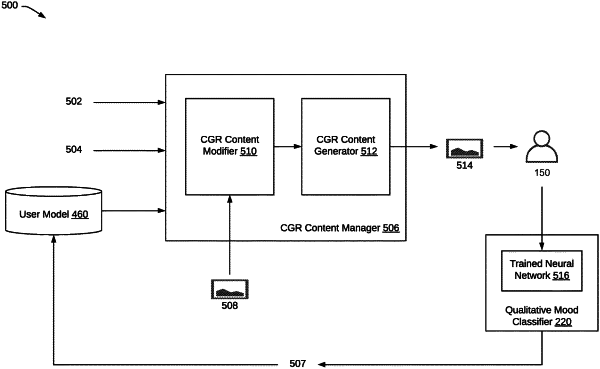| CPC G06F 3/011 (2013.01) [G06N 20/00 (2019.01); G06F 2203/011 (2013.01)] | 22 Claims |

|
1. A method comprising:
at an electronic device including one or more processors, a non-transitory memory, and one or more displays:
while presenting reference computer-generated reality (CGR) content via the one or more displays, obtaining a request from a user to invoke a target state for the user;
in response to obtaining the request from the user, generating, based on a user model associated with the user and the reference CGR content, first modified CGR content to invoke the target state for the user, wherein the user model provides projected reactions to the first modified CGR content;
presenting, via the one or more displays, the first modified CGR content;
after presenting the modified CGR content, determining, using a qualitative mood classifier, a resultant state of the user;
in accordance with a determination that the resultant state of the user corresponds to the target state for the user, updating the user model to indicate that the first modified CGR content successfully invoked the target state for the user; and
in accordance with a determination that the resultant state of the user does not correspond to the target state for the user, updating the user model to indicate that the first modified CGR content did not successfully invoke the target state for the user.
|